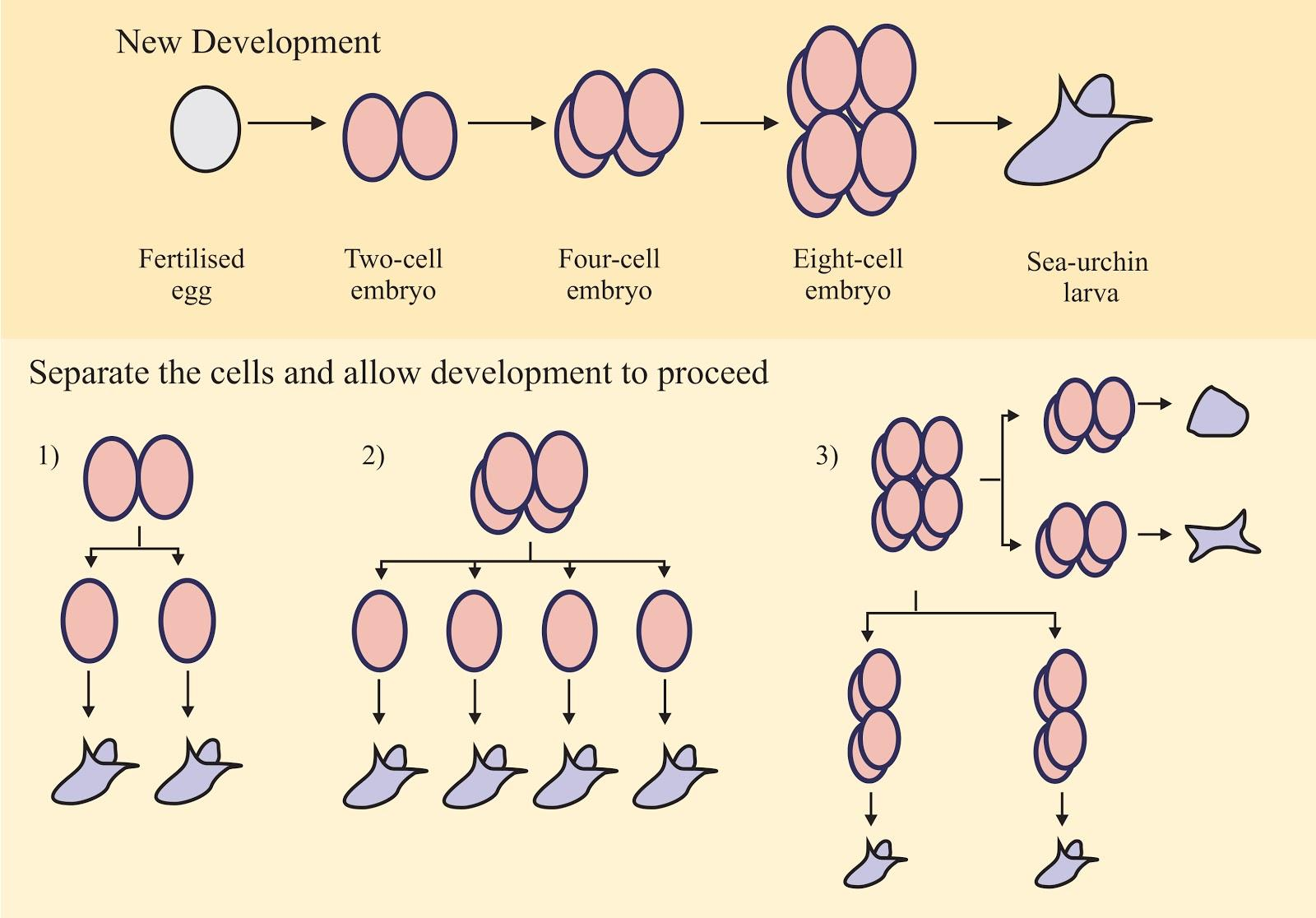
What conclusion can be drawn from the experiment?

(a) Sea urchins would be better adapted if they had smaller eggs.
(b) Embryo cells are committed to different developmental fates on the basis of selection.
(c) Different cells of an embryo can have equal potential for development.
(d) A particular cell of an embryo always develops into the same structure.
(e) Cell division ensures that both cells will develop identically.

Answer
524.4k+ views
Hint: The development of the embryonal cells depends upon the environment and various other factors. They have different male and female sex organs with different features that help in the process of reproduction.
Complete answer:
From the experiment, it is observed that the normal development of sea urchins will simply result in the formation of a zygote which is formed after the process of fertilization. This fertilized egg then undergoes various series of divisions that will result in the formation of the first two-celled, then four-celled, and lastly eight-celled embryo. This will then lead to the formation of sea urchin larva.
But in the experiment, as shown in the question, if we separate all the two-celled, four-celled, and eight-celled embryos from each other, then these embryos will separately make their own individuals. The two-celled embryo will result in the formation of two cells which will later form two sea urchins larva, while four-celled embryos will form four sea urchins larva, and the eight-celled embryo will form wight sea urchins larva. This larva may be identical or unidentical depending on the basis of selection. Thus it is said that the different cell of the embryo has different developmental fates. This selection may be on the basis of various factors that may also include environmental factors.
So, the correct answer is ‘Embryo cells are committed to different developmental fates on the basis of selection’.
Note:
In the early stages of development of sea urchins it undergoes 10 cycles of cell division. This will lead to the formation of blastocoel when the epithelial layer will envelop it and then later it will lead to the formation of gastrula where the germ layers are produced and a central cavity is formed called the blastocoel.
Complete answer:
From the experiment, it is observed that the normal development of sea urchins will simply result in the formation of a zygote which is formed after the process of fertilization. This fertilized egg then undergoes various series of divisions that will result in the formation of the first two-celled, then four-celled, and lastly eight-celled embryo. This will then lead to the formation of sea urchin larva.
But in the experiment, as shown in the question, if we separate all the two-celled, four-celled, and eight-celled embryos from each other, then these embryos will separately make their own individuals. The two-celled embryo will result in the formation of two cells which will later form two sea urchins larva, while four-celled embryos will form four sea urchins larva, and the eight-celled embryo will form wight sea urchins larva. This larva may be identical or unidentical depending on the basis of selection. Thus it is said that the different cell of the embryo has different developmental fates. This selection may be on the basis of various factors that may also include environmental factors.
So, the correct answer is ‘Embryo cells are committed to different developmental fates on the basis of selection’.
Note:
In the early stages of development of sea urchins it undergoes 10 cycles of cell division. This will lead to the formation of blastocoel when the epithelial layer will envelop it and then later it will lead to the formation of gastrula where the germ layers are produced and a central cavity is formed called the blastocoel.
Recently Updated Pages
Master Class 12 English: Engaging Questions & Answers for Success

Master Class 12 Business Studies: Engaging Questions & Answers for Success

Master Class 12 Economics: Engaging Questions & Answers for Success

Master Class 12 Social Science: Engaging Questions & Answers for Success

Master Class 12 Maths: Engaging Questions & Answers for Success

Master Class 12 Chemistry: Engaging Questions & Answers for Success

Trending doubts
What are the major means of transport Explain each class 12 social science CBSE

Which are the Top 10 Largest Countries of the World?

Draw a labelled sketch of the human eye class 12 physics CBSE

Explain sex determination in humans with line diag class 12 biology CBSE

Explain sex determination in humans with the help of class 12 biology CBSE

Differentiate between homogeneous and heterogeneous class 12 chemistry CBSE




